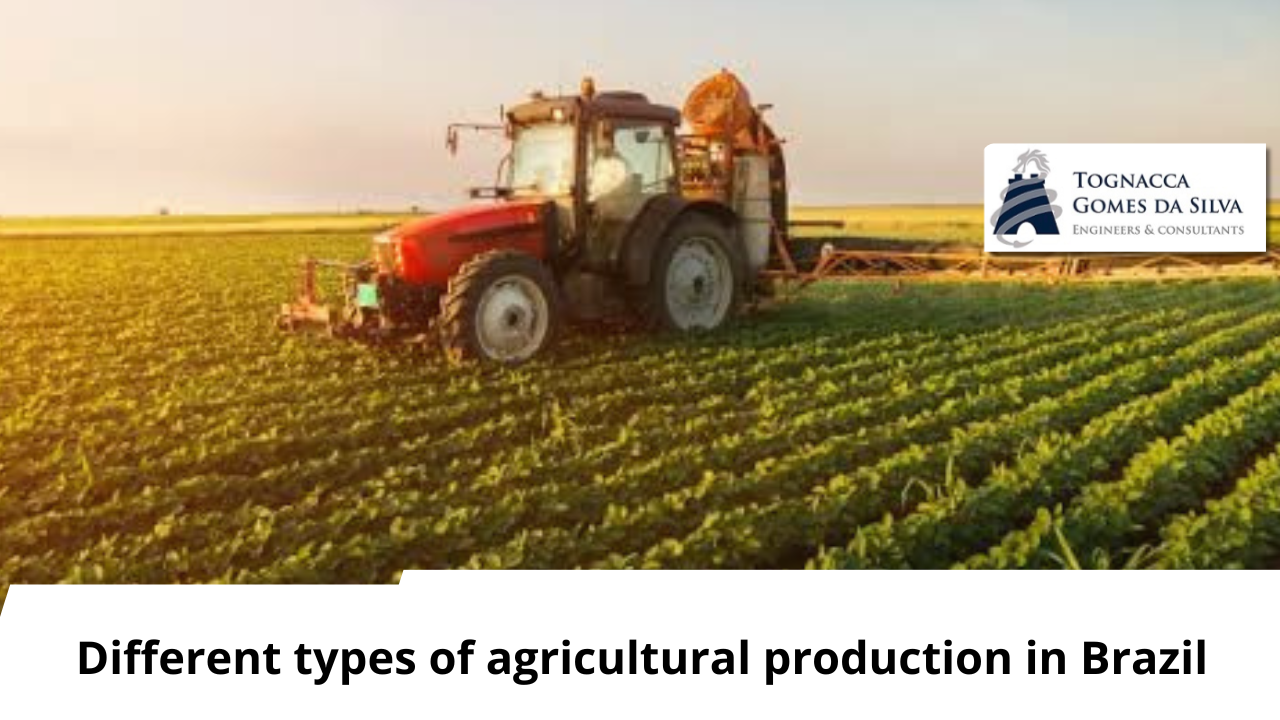There are several types of agricultural production in Brazil, however, some types are more common.
A country of continental dimensions and vast diversity of soils and climates is suitable for different agricultural practices. Therefore, there are several types of agricultural production in Brazil: modern agriculture; intensive agriculture; extensive agriculture; family farming; employer agriculture; and organic agriculture.
Among other distinctions, their characteristics vary depending on the size of the properties, the market for which they are intended and the degree of technology implemented on the farms.
The attributes of the geographic areas and the vast territorial extension resulted in different types of agricultural production in Brazil. Such practices range from traditional models to highly automated systems, covering a wide range of cultures. Furthermore, the type of market the farmer targets also plays a crucial role in determining the agricultural method adopted.
Modern
With the advancement of innovations in the agricultural sector, the practice of agriculture globally has entered a new era: modern agriculture, which is characterized by the progression of agricultural production methods and the transformation of rural activity patterns. This development originated during the Industrial Revolution and has gained momentum over the past hundred years.
Thus, this production model is based on the incessant adoption of technology and scientific research and remains relevant, tending to progress at an accelerated pace, as farmers assimilate various innovations.
An example of this are the practices of precision agriculture and digital agriculture, which began to be applied in the daily lives of Brazilian farmers from 2010 onwards. Such methods have prospects for expansion as new technologies are integrated, such as Artificial Intelligence and the Internet of Things. (IoT).
The application of technology and modern production methods allows this agricultural modality to reach increasingly higher levels of productivity and profitability.
Intensive
Intensive agriculture and modern agriculture are concepts that are equivalent. Both emerged in the 20th century as a response to the growing global need for food.
Through agricultural machinery, chemicals, resources and other technologies, farmers have been able to significantly increase crop production and profitability. Thus, they maximized the results per cultivated area.
However, if conducted inappropriately and with poor management, intensive agriculture can result in soil degradation and other environmental damage.
Extensive
Extensive or traditional agriculture refers to that which employs simple and inherited production methods, characterized by little mechanization and limited use of technology, often resulting in modest productivity for farmers.
Consequently, this approach relies on rudimentary and ancient cultivation techniques, with little automation and technological investment, which translates into less expressive production results.
It is important to highlight that extensive agriculture is still widely common in Brazil, being used mainly by small producers. Generally, production is intended for own consumption or to supply the local market.
Family
As the term itself suggests, the family-based agriculture model is characterized by the participation of members of the same family in cultivating the land. In addition to serving subsistence needs, this type of agricultural activity plays a fundamental role in supplying food to the Brazilian domestic market.
As evidenced by data from the Agricultural Census conducted by IBGE in 2017, approximately 77% of rural properties in the country adopt the family farming model.
Thus, given its national relevance, several government policies were implemented with the aim of strengthening family-based agriculture, offering technical and financial support to the producers involved.
Employer
In contrast to the previous model, in employer agriculture, production is not intended for internal family consumption, but for the national and international market.
To achieve this objective, there is a substantial investment in optimizing crop management, with the hiring of qualified labor and the application of a variety of inputs, management practices and technologies that guarantee the profitability of the enterprise.
In this way, it is feasible to increase production efficiency in the field. This model is adopted on medium and large properties that have considerable production potential.
Organic
With a strong focus on environmental and health issues, organic agriculture has transcended the category of a mere trend to consolidate itself as a significant market segment.
This approach prioritizes production with reduced use of pesticides and synthetic fertilizers, prioritizing the use of inputs of natural origin.
According to the Organic Agriculture Association, this model of agricultural practice develops technologies adapted to the local characteristics of the soil, relief, climate, water resources, solar radiation and biological diversity specific to each region, promoting harmony between these elements and human beings.
It is important to highlight that sustainable agriculture shares similar ecological principles with natural, biodynamic and agroecological agriculture, although it adopts different techniques and knowledge.
Conclusion
The various types of agricultural production in Brazil reflect not only the country’s territorial vastness and geographic characteristics, but also adaptation to market demands and environmental concerns. Thus, from highly technological models to traditional practices, the agricultural scenario is marked by modern agriculture driven by technology, family farming as a pillar of internal food security, employer agriculture aimed at the national and international market, and organic agriculture, highlighting for environmental sustainability. This variety of approaches highlights the complexity of the sector and the need for policies that promote both productivity and sustainability in the field.
( source: bruna oliveira/ digital agro)



